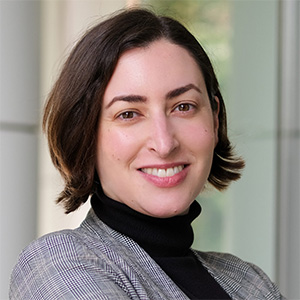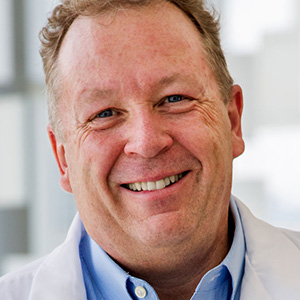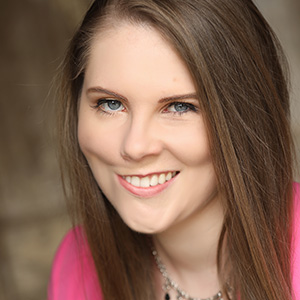A ‘cozy’ California meeting on lipids
About a year from now, scientists will get together in Long Beach, California, to share their latest research at the American Society for Biochemistry and Molecular Biology's Deuel Conference on Lipids.
The meeting, to be held Jan. 21–24, 2025, will focus on the role of lipids in five major organ systems: the liver and adipose tissue, kidney, heart, brain and the gastrointestinal tract.


The organizers told ASBMB Today that they wanted an opportunity for scientists, in industry and academia, whose work involves lipids to come together to see how all their research intersects. They chose to organize the meeting in this way so that molecular-, cellular- and system-level researchers who focus on lipids can interact in the same sessions.
ASBMB Today talked to the organizers about hot topics in lipids, why they chose this organ-centric approach and what they hope attendees will get out of it.
Sarah Cohen is an assistant professor of cell biology and physiology at the University of North Carolina at Chapel Hill. Her lab studies how lipids move within and between cells. Furthermore, the lab uses cutting-edge microscopy techniques, such as live cell imaging and super-resolution microscopy, to understand how defects in lipid trafficking contribute to metabolic and neurodegenerative diseases. Cohen has received many awards including the Chan Zuckerberg Initiative Collaborative Pairs Award, the Zeiss Microscopy Featured Researcher and the UNC Department of Cell Biology and Physiology Faculty Mentoring Award.
Philipp Scherer is a professor of medicine and the director of the Touchstone Diabetes Center at the University of Texas Southwestern Medical Center. His research focuses on adipose tissue and its normal functions and roles in disease. In 1995, Scherer discovered that adipocytes produce the hormone adiponectin, an important signaling molecule that regulates glucose levels, lipid metabolism and insulin sensitivity. He has won the American, European and Asian awards for diabetes research; the 2015 Banting Medal for Scientific Achievement; the 2017 EASD–Novo Nordisk Foundation Diabetes Prize for Excellence; and the 2018 Manpei Suzuki International Prize for Diabetes Research. He has served on the Deuel conference board for many years.
The interview has been edited for length, clarity and style.
And at the end, we'll tell you a bit about Harry Deuel himself, conference namesake and margarine booster.

Introduce yourself and tell me about your research and how you got interested in lipids.
Cohen: I became interested in lipids during my postdoctoral work. My Ph.D. was focused on the cell biology of viruses and how viruses can invade the host cell and nucleus. The virus I was studying was causing nuclear envelope breakdown in order to get into the nucleus. During my Ph.D., I became interested in organelle biogenesis and turnover. For my postdoc, I went to the lab of Jennifer Lippincott–Schwartz, who is a pioneer in that area. She was one of the first to use green fluorescent protein to do live cell imaging to study the dynamics of many different organelles. As I was about to start my postdoc, [Tobias] Walther and Bob Farese published a review article in Cell about lipid droplets as organelles and about all the open questions about their cell biology. So, I thought it would be great to take advantage of some of the advanced imaging tools in the Lippincott–Schwartz lab to look at lipid droplet organelle dynamics.
After my postdoc, my lab ended up focusing on lipid droplets. Within the last 10 or 15 years, it's become clear that these cellular compartments can exchange materials, including lipids, at membrane contact sites, and this is especially important for lipid droplets because they have a unique structure where the hydrophobic core is surrounded by a phospholipid monolayer. So lipid droplets are not connected to the vesicular trafficking pathways.
My lab is using a variety of approaches to study lipid droplet organelle contact sites to visualize the dynamics of these contact sites, to identify proteins at the contact sites and to study which lipids are being exchanged.
Another area that my lab has recently become interested in is the role of lipid metabolism and trafficking in neurodegenerative diseases.
Scherer: My interest in lipids, like Sarah, began at the cellular level. During my Ph.D., I worked on mitochondrial protein import and its machinery. During my postdoc, I wanted to continue studying the cellular trafficking of proteins, so I joined Harvey Lodish’s lab at the Massachusetts Institute of Technology. I used a very nice cell-culture system of adipocytes, and we wanted to use this model to study what was being released by adipocytes into the circulation.
When I started my own lab at Albert Einstein, I took an approach to look at the whole-body level and the physiology of fat cells. When you study fat cells, you have to be interested in lipids, by definition.
Over the years, we slipped into the area of interorgan communication via classical secretory proteins and signaling lipids. These include sphingolipids, ceramides and others that play a major role in metabolism. We still maintain a very strong interest in adipose tissue physiology and how it affects other organ systems.
What is your history with and general impression of the Deuel meeting?
Cohen: I have attended one Deuel meeting in Monterrey, California, and I was really impressed. It was really refreshing that all the talks were about lipids but in many different physiological and disease contexts. It’s a small setting and the afternoons are usually free for other activities. So there's a really good opportunity for trainees to interact directly with all of the speakers. It’s a beautiful setting, so it feels like a very cozy meeting where we have lots of opportunity for interaction.
Scherer: I've been on the board of the Deuel meeting for quite a few years and attended many meetings. After all this time, it remains the most important lipid meeting. It has a bit of a unique setting, and we try to keep it relatively small and informal to encourage discussions. We hope that the trainees will interact with the speakers and perhaps present something themselves. We want to create a level playing field for everyone to ask questions.
What can you tell me about the 2025 meeting thus far? Do you have a theme?
Cohen: Something that is really important to us is to include diverse speakers. We want to make sure that the speakers are diverse in terms of the topic, geography, gender, race and ethnicity. We also encourage trainees to submit abstracts.
Scherer: Even though I am a cell biologist/ biochemist by training, my research has focused more on the whole-system level. Sarah brings the cell biological expertise in organizing the meeting. So, we hope we will be able to do both sides justice.
We decided that the easiest way to organize the meeting is by organ. We will have five sessions dedicated to the organ systems that mediate lipid metabolism: liver and fat tissue, kidney, heart, brain and GI tract. We hope this organization will do justice to the cellular aspects of lipids like the lipid droplet, fatty acid metabolism and organelle contact sites.
We always welcome and invite one or two industry speakers as well. There is an important continuum from basic elucidations of mechanism in academia to applying these principles pharmacologically in industry.
What are some of the hottest topics in lipids right now that you hope to cover?
Cohen: We would really like to cover lipotoxicity, lipid peroxidation and ferroptosis, which is a cell-death pathway that depends on lipid peroxidation and seems to be important in many different physiological contexts, including cancer and neurodegenerative disease. In addition, we want to cover sterols and lipid rafts as well as novel therapeutics targeting lipid metabolism and enterocytes as gatekeepers to systemic lipid homeostasis.
Scherer: We're trying to bring everything into the context of the revolution that's currently going on with single, dual and tri agonists that prompt massive weight loss. We want understand what these drugs mean for lipid homeostasis on the basic science side.
How’s it been working together?
Cohen: It has been a pleasure. I was so excited when I was asked to co-organize with Philipp because he has such a wealth of knowledge in the field. He's a pro. I'm relatively new to this, but he has been a great mentor. I think it's going to be a great program and a great meeting in the beautiful Long Beach, California.
Scherer: It's been a real privilege to work with Sarah on this meeting. We complement each other, and hopefully we will manage to put out a really exciting program that's going to sell out. I hope that attendees will have really fond memories of this meeting and that we can offer something to entertain them for a couple of days.
Margarine was no fat chance
What do margarine, cooking oils and makeup have in common? Their use today was made possible by Harry J. Deuel. Deuel was a biochemist and nutritionist who made seminal contribution to the fields of lipids and food science during the mid-1900s. He is also the namesake of the American Society for Biochemistry and Molecular Biology’s Deuel Conference on Lipids, which has brought scientists together to discuss the latest on lipids for over 50 years. Read on to learn more about the man behind the meeting and the foundation of lipid research.
The term lipid was coined more than 100 years ago by a French scientist. At the center of the emerging lipid field was Deuel, who authored a three-volume treatise on the chemistry, metabolism and nutritive value of lipids in 1958. This publication made him an “authority” on lipids, according to Joseph Roe, a pioneer in carbohydrate metabolism.

Deuel spent his career at the University of Southern California School of Medicine investigating the nutritional value of lipids and related molecules. He was the first to show that fortified margarine, a butter substitute made from plant or animal fats infused with vitamins, is an adequate nutritional alternative. This work was particularly important during World War II, during which butter and other goods were rationed.
In addition, Deuel discovered that isopropyl and stearyl citrates could prevent flavor reversion in edible fats such as soybean oil. Flavor reversion is characterized by the development of an unwanted taste in edible fats prior to turning rancid and is caused by exposure to light or heat.
Finally, Deuel showed that sorbic acid could act as an antifungal agent and preservative in food packaging to prevent contamination. Today, sorbic acid and its potassium salts control mold and yeast growth in dairy, meat, fish, vegetables, fruit and some wines. In addition, these molecules are also used to preserve cosmetics.
Enjoy reading ASBMB Today?
Become a member to receive the print edition four times a year and the digital edition monthly.
Learn moreFeatured jobs
from the ASBMB career center
Get the latest from ASBMB Today
Enter your email address, and we’ll send you a weekly email with recent articles, interviews and more.
Latest in Science
Science highlights or most popular articles

Building the blueprint to block HIV
Wesley Sundquist will present his work on the HIV capsid and revolutionary drug, Lenacapavir, at the ASBMB Annual Meeting, March 7–10, in Maryland.

Gut microbes hijack cancer pathway in high-fat diets
Researchers at the Feinstein Institutes for Medical Research found that a high-fat diet increases ammonia-producing bacteria in the gut microbiome of mice, which in turn disrupts TGF-β signaling and promotes colorectal cancer.

Mapping fentanyl’s cellular footprint
Using a new imaging method, researchers at State University of New York at Buffalo traced fentanyl’s effects inside brain immune cells, revealing how the drug alters lipid droplets, pointing to new paths for addiction diagnostics.

Designing life’s building blocks with AI
Tanja Kortemme, a professor at the University of California, San Francisco, will discuss her research using computational biology to engineer proteins at the 2026 ASBMB Annual Meeting.

Cholesterol as a novel biomarker for Fragile X syndrome
Researchers in Quebec identified lower levels of a brain cholesterol metabolite, 24-hydroxycholesterol, in patients with fragile X syndrome, a finding that could provide a simple blood-based biomarker for understanding and managing the condition.

How lipid metabolism shapes sperm development
Researchers at Hokkaido University identify the enzyme behind a key lipid in sperm development. The findings reveal how seminolipids shape sperm formation and may inform future diagnostics and treatments for male infertility.

